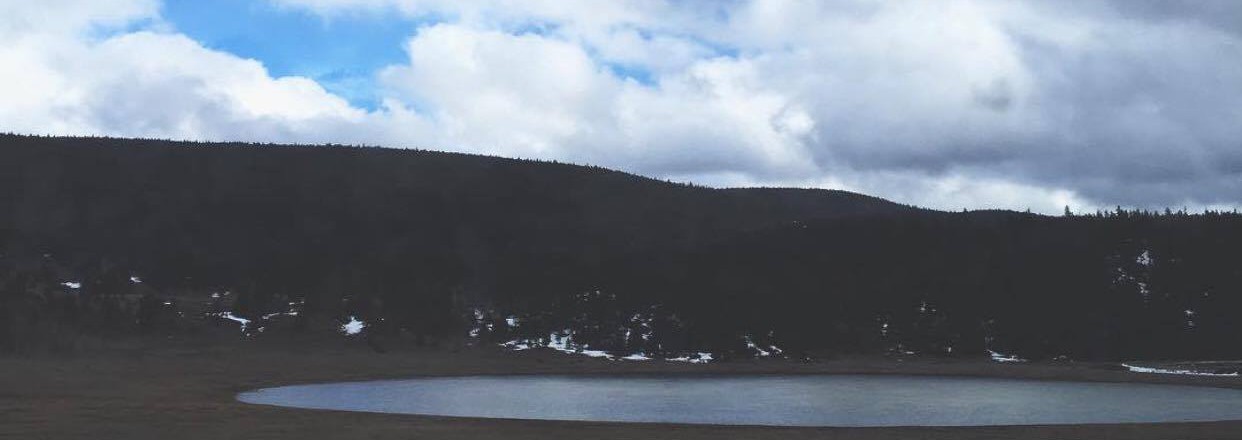Week 10: Alternative Methods (March 14-18, 2016)
I decided to use the theme, Humans of Vancouver, in a more figurative way to reflect on the motives of community centres and how people are distributed within a certain space. The photos aim to show how even though community centres often appear to build relationships and bring the community together, they often bring certain people together and this separation can be physically seen in the different areas of the building.
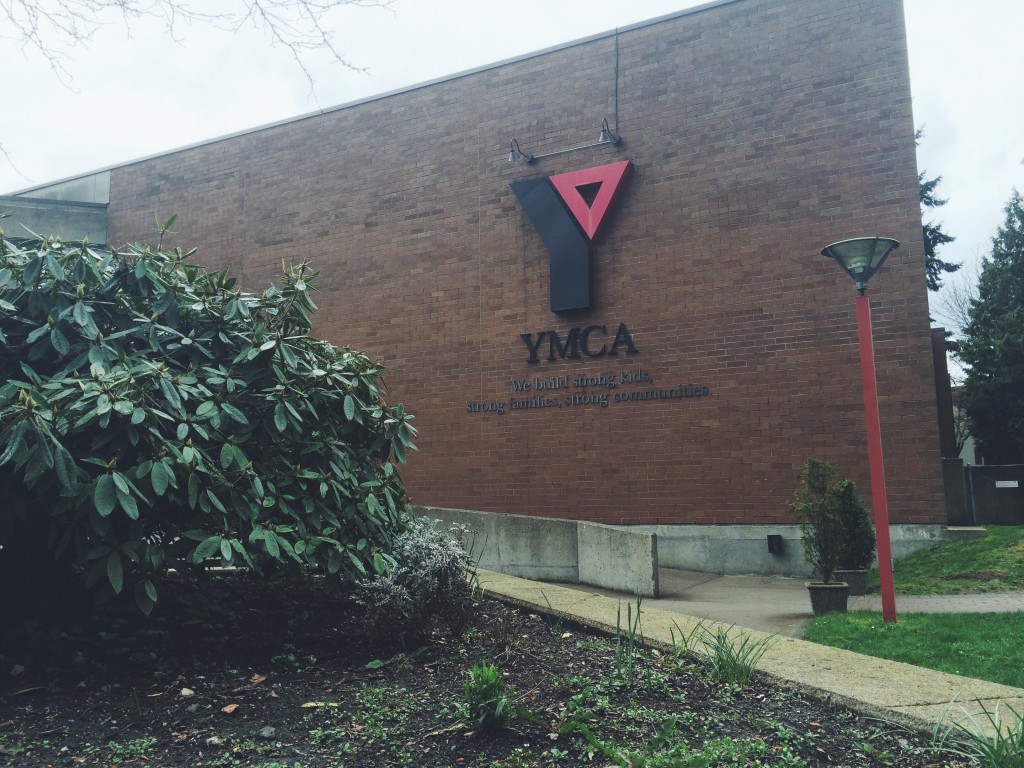
Entrance to The Langara Family YMCA.
The photo above shows the entrance to The Langara Family YMCA. I decided to take a photo of it because of its specific slogan “We build strong kids, strong families, strong communities”. I had never actually stopped to read the slogan before.
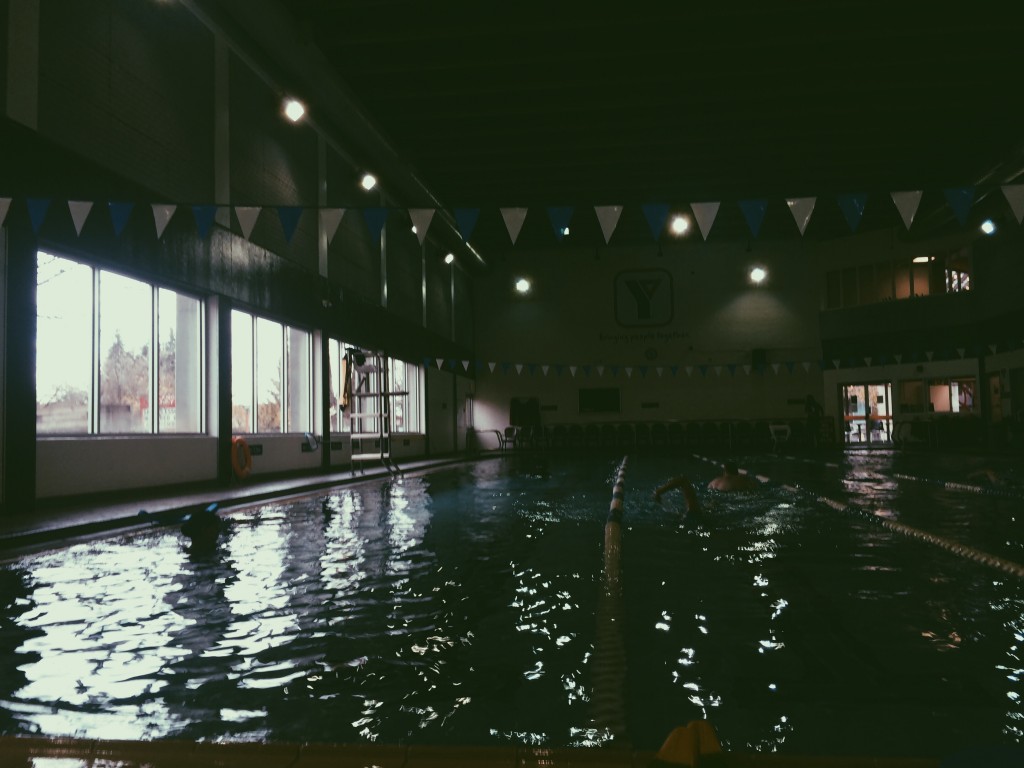
The pool area in YMCA.
This is a photo I took after swimming and it’s probably my favourite picture. It’s hard to tell in this photo but each lane had a sign board that separated the fast lane, medium lane and slow lane. It was interesting to see almost a distinct group of people within each lane: one lane for families with their young children, one lane for seniors, and another two lanes that was predominantly for adults/young adults. Below the “Y” sign was another slogan which said “Bringing People Together”.
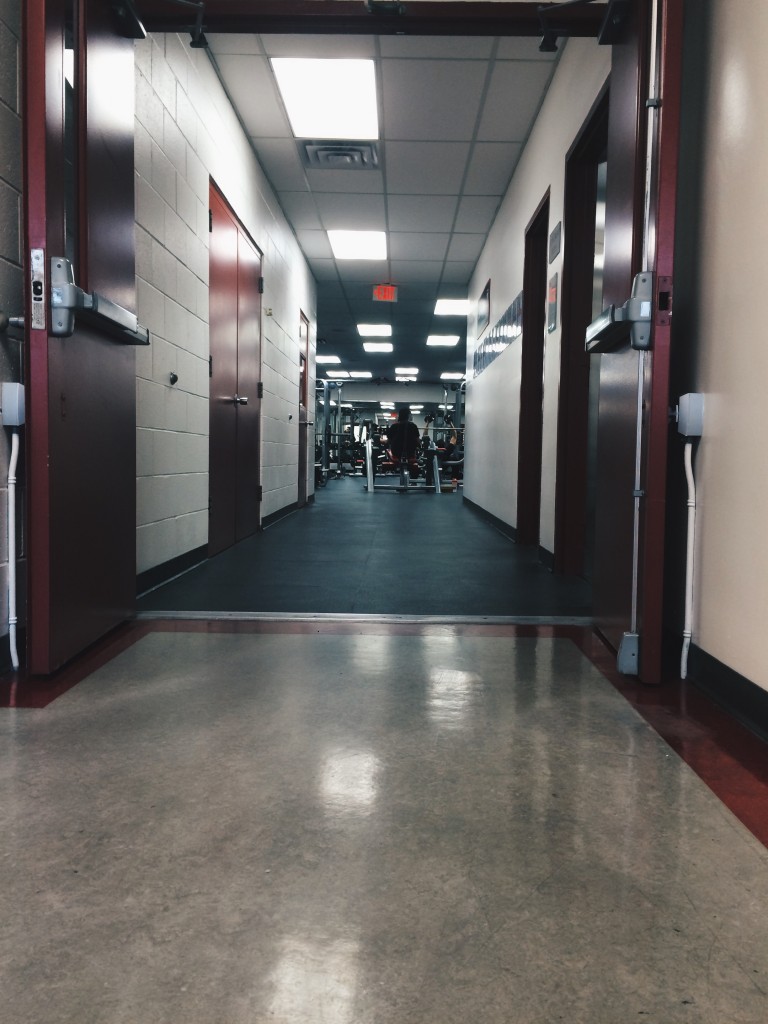
On the second floor, the corridor leading to the weight room and gym.
The second floor is where the weight room and gym is located. The atmosphere completely changed (rather cold or exclusive almost). To me, it seemed rather intimidating, and unwelcoming. In contrast to the swimming pool area, the room is filled predominantly with young adults, and only the sounds of weights clanking fill the space. People appear disengaged and zoned out from one another, with almost all of them wearing earphones.
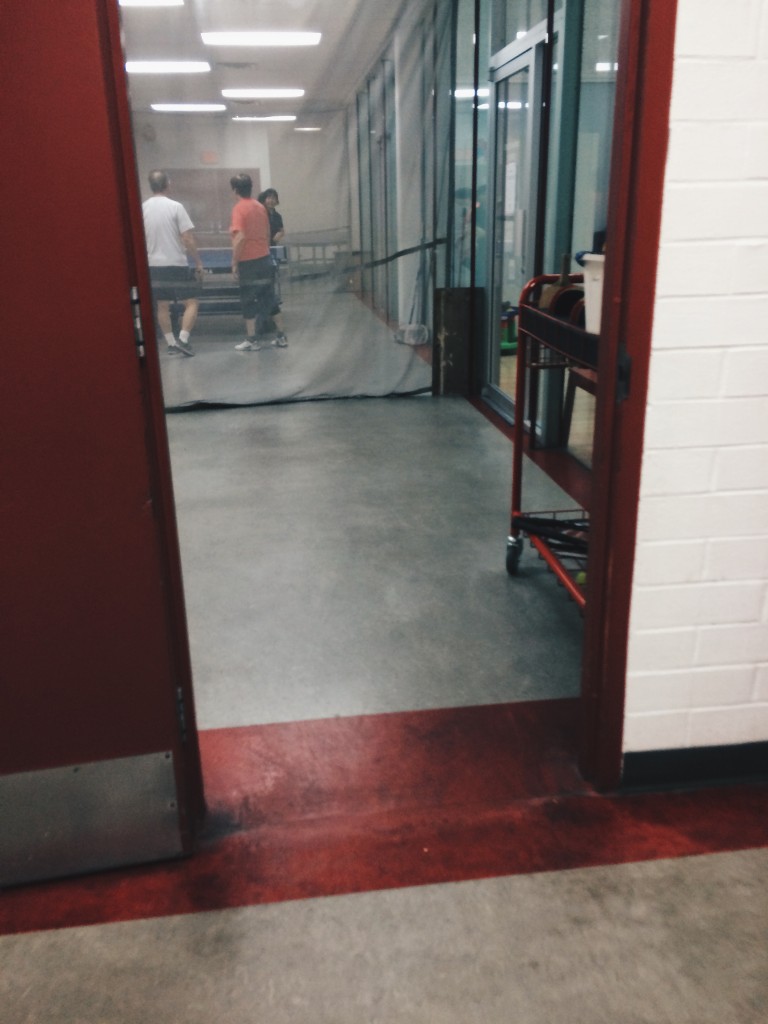
Entrance to the ping-pong area and squash/badminton courts.
Downstairs you will find yet another different scene. Even before stepping into the area, I heard senior adults speaking loudly and confidently, mostly in Cantonese. Members were talking to each other about their friends, their weekend and the cheap holiday they went on last year while setting up their games. There weren’t any children or young adults in this area. This group seemed very comfortable and acquainted with each other and the space that they were in.
Community centres do bring people together, and at YMCA particularly, you’ll find young children to senior members engaging in different activities. Yet, it’s interesting to see how the different spaces and facilities attract particular types of people. Do these types of places actually bring people together, or just particular groups of people together? Does this happen naturally or do specific events have to be planned in order for groups to interact with one another? Perhaps you could also argue that it works the other way round as well – different people make themselves exclusive from other social groups, which transcends into the physical space that they occupy. How are these “invisible barriers” created? As an observer, it was definitely eye opening to see the different “segregated” groups formed all under one roof.
Week 5 and 6: Focus Group Discussions / Data Visualizations (February 1-12, 2016)
Last week we were able to learn more about Focus Group Discussions through the reading and participating in one with my fellow classmates. Having facilitated a few focus group discussions before, it was incredibly useful to be able to participate in one – as I found that I learned so much more by doing so. I was able to see some of the struggles and internal conflicts as a participant (international parent) during the session. This was especially true in comparison to the previous conversation I had with Gabriel who was also an international parent. By having this different experience between different types of segmented/mixed groups, I could definitely understand the strengths and weaknesses of both.
Our group has been thinking about using focus group discussions as a method of answering our research question. We believe focus group discussions will enable participants to take their own initiatives towards understanding their reasons for joining Skyline as well as learning more about the stigma that has been created within the community. Since these questions are faily open-ended questions, we believe it will be best tackled through dialogue amongst the students, rather than solely basing our research on written survey questions (where students may not get enough time to think the question through). Allowing the students to talk to one another will potentially help them reflect on their own ideas, but also learn about the possible different reasons and feelings that other students may have. The focus group discussions may also be a method of encouraging students to get involved in producing a short video revolving around changing perspectives of Skyline within the community.
The next step would be to think about how to group students and how this “segmentation” will input the outcome of each session. I believe this won’t be very easy, due to the variety of demographics (age, social-response level, academic levels, race, gender etc.) that could very much impact the course of action during each focus group. Also the variety of issues or “causes” that we may want to investigate further may not necessarily relate to all members participating in a particular focus group. I believe it will be quite interesting to see how our initial surveys that we will send out prior to arriving at Williams Lake will help us gain a better idea on our research question. After gaining inspiration from reading another group’s blog, I think these initial surveys will help us produce “sub-research” questions that could help us facilitate our focus group discussions more effectively and productively.
Week 4: Participant Observation (January 25-29, 2016)
This week’s guest lecturer, May Farrales, a PhD Candidate in Geography, came to talk to us about participant observation, particularly within her research area concerning nationality, sexuality and gender identities of the Filipino-Canadian community. I found her discussion on participant observation to be incredibly engaging, as she provided a very holistic view of both its benefits and limitations as a research method. Having taken part in a participant observation before, I found this lecture to be incredibly useful in reflecting back and assessing some of the successes and failures of my previous experience. There were several key learning points, which I think are incredibly important to keep in mind, especially throughout our time at Williams Lake:
- Emotional and experiential learning – I believe a fundamental component to using participant observation as a research method, is its benefit of getting a more complete response and outlook of a particular event and community. During a participant observation, you can learn so much through the smells, sights, sounds and being aware of your own feelings and responses to certain things.
- “Observation is not innocent” – As May stated in her presentation, acknowledging that our own views, past experiences and assumptions shape how we perceive and gather information during an event is fundamental. Seeing an event is very much through our own eyes and our experience, hence it is incredibly subjective.
- “Representation is not innocent” – Our own experiences and perceptions heavily shape and affect the information we collect and produce. Hence, it is important to remember how information is shaped whenever it is retold, and how this is heavily embedded with power relations.
The last two points which May shared with us were particularly interesting, as they made me think about the exercise we did last week. While collecting preliminary data from various sources such as Data BC and CANSIM, it made me think about how we often emphasize the personal and individual aspect of participant observation, yet we don’t really question how big data providers can potentially produce heavily biased research as well. In some ways this can be more dangerous as we assume their information, being government or provincial data collections, is automatically more reliable and accurate. Thinking about who produces these types of data collections can help us understand what the information suggests, and more importantly, what it may conceal or distort.
This week’s topic definitely allowed us to think about the types of participant observations that we may encounter at Williams Lake. This could include our first visits to School District 27 and Skyline Alternate School. I think it will be interesting to gage the classroom dynamics if we got a chance to participate during class times, lunch breaks or in their meetings. It will be important to get consent from the teachers and students before any participant observations, as well as briefing them on our roles and purpose of coming to Williams Lake.
Week 3: Research Question and Proposal (January 18-22, 2016)
We are halfway through Week 3 already! The next few months are definitely going to pass by really fast, and I am excited to see how this project will evolve and grow. We will be having our first meeting with School District 27 on Thursday, 21st January. We hope to learn more about their work and where they see us potentially doing research. In the mean time, our group has continued our secondary research and highlighted areas that interest us. This included the alternative school programs, the outdoor education program and the various programs that SD27 has for First Nations youth and families. We look forward to the first initial meeting as it will help us tie our interests with the interests of our community partner.
I was a little worried throughout this week about meeting our first few deadlines, in terms of creating our potential research questions and group proposal. I think it just goes to show that no matter how prepared and organized you are, it is important to be mentally prepared for minor setbacks and learning how to deal with those situations by looking for alternative solutions. While waiting to arrange our first meeting with our community partner, we were able to use this time to do further research and found the areas that we were most interested in. We have also come up with questions and ideas that will help our first meeting be more valuable and rich for both parties. I was really proud of my group members for handling this in such a positive and calm manner. I believe it will help us in dealing with even bigger obstacles in the future.
As things start to pick up, I have been thinking about ways to maintain the great group balance and energy that we have had so far. From previous group work experience and community partner collaboration, I have found that short weekly check-ins to be extremely valuable. I believe, all the groups working at Williams Lake will arrange weekly or bi-weekly meetings with their community partners for updates. However, it may also be useful for your own group to have check-ins with each other. I found in the past that touching base with each group member helps raise any minor concerns before they turn into bigger issues down the road. It also allows your group to reflect on vital components such as communication, personal issues, workload distribution, as well as updates. These short meetings could make a vital difference for the experience of all group members and their work with the community partner, so I think it is important to take the time to do so! It also helps your group become closer, which ultimately improves communication and understanding one another.
I am thrilled for our group to have our first meeting with our community partner and look forward to seeing where this research project goes 🙂
Week 2: Positionality and Ethics (January 11-15, 2016)
This week we had a guest speaker, Madeleine Mark, from UBC’s Centre for Community Engaged Learning to learn more about community-based experiential learning (CBEL). While learning about some of the guiding principles in working with a community partner, one thing that stood out to me was the importance of mutual collaboration and the co-production of knowledge. Having participated in another program by CCEL, I have learnt that this is a crucial factor in working with a community partner. It is easy for us to produce an extravagant paper that meets our grade assessments and gets us a good grade. However, one of the intrinsic differences when working on a “CBEL” course is the ability to collaborate and understand the strengths and needs of the community partner and produce something that can be a useful asset for them. This mindset will be important particularly when we are faced with various obstacles.
We also discussed an article about ethics and participated in several activities that made us think about our own positionality in society, as well as when conducting research. Conducting research in Williams Lake will involve potential youth and community members that may come from a diverse range of socio-economic and racial backgrounds. Hence, it will be crucial to gain consent from the participants, especially those who are underage, and their full understanding of how their contribution plays a role in our research. There may be potential complications when collaborating with youth, such as difficulty contacting their legal guardians and limited ways of documenting the research we find. Furthermore, it will be important to maintain strict confidentiality with any personal information that we have gathered, especially in all the work that we produce. Beyond this, I feel that it is important for our group to produce a consensual guideline prior to going to Williams Lake. This guideline can be used if we conduct interviews or focus group discussions to brief participants on things such as:
- How we are recording data (Will this audio be recorded? A written transcript? Taking short videos if we are making a short film?)
- What information will be shared and what will remain anonymous
- Who will this information be shared with (e.g. What do we post on our blog? Who will see the final research project?)
- Their rights to stop or skip any question or group discussions (Important especially if we are working with youth who may have never participated in a research activity before. It can often be quite daunting and scary, particularly if our research question touches on issues that may be affecting them)
- Our background and reasoning for coming to Williams Lake (I believe this will be a crucial aspect that ties strongly with our positionality as researchers.
This guideline will help our group come to a mutual ground on how we shall conduct research at Williams Lake, and raise any issues and questions before any initial research. It may be a good idea for other groups to do this as well! Additionally, it may also be useful to share this will our community partner and supervisor prior to the trip in order to receive a general consensus and potential suggestions for improvement. Sharing these guidelines with participants also acknowledges our position as researchers. I think it is important for us, but also for the participants, to understand that we are UBC students, not experts. We will be entering a new space, their space, and allowing them to get to know us will help us with a more reliable, respectful and productive collaboration.
UBC students who plan to conduct any research must receive an ethics approval first. The UBC Office of Research Ethics website states that “Any research involving human participants that is conducted at UBC facilities (including UBC-affiliated hospitals) or by persons connected to the University must be reviewed and approved by one of UBC’s six sanctioned Research Ethics Boards (REBs).” First a research ethics application has to be submitted to https://www.rise.ubc.ca/, an online research administration tool that allows researchers to manage and track applications online. Once a research has been approved, this website also helps with certification and financial assistance. This website also provides further information about ethics guidance notes for various fields, such as: animal care, clinical research and children & women. Applicants are also recommended to take the Introductory Tutorial for the Tri-Council Policy Statement (TCPS2 2014): Ethical Conduct for Research Involving Humans. This online interactive and self-guided tutorial can be found here.
Week 1: Group Introductions and False Creek (January 4-8, 2016)
This week was an exciting week after learning that I will be working with Angela and Therise in partnership with School District 27. During our first group activity, the three of us went on a walking tour around False Creek and finished the day with some coffee at Kafkas. The walking tour allowed us to learn more about the development in False Creek area, as well as learn more about each other. We discussed a whole spectrum of topics from our hobbies to our passions and interest in SD27. Through this process, we were able to identify many similarities in our working habits, particularly when working in a group. We were also able to note many common interests and expectations for this course and our research project with SD27.
I believe this open communication is fundamental in maintaining a productive and inclusive environment amongst our group, and I am happy we were able to start off in such a manner. Since we are not only working as a group, but also with a community partner, maintaining internal harmony will heavily reflect on and affect our ability to collaborate with SD27. After discussing this with my group, I believe all of us acknowledge the fact that our actions could potentially have direct and indirect impacts on SD27 and its community. Hence, it will be important for us to maintain this open communication and work ethic in order for us to make this impact a positive and reciprocal one.
Amongst our similarities, our group carries a variety of strengths and skills that will allow us to delegate work appropriately. After learning about my group’s personal and academic interests, I am eager to see how these can play into our project in creative and relatable ways for our viewers. For example, I learnt that Angela is interested in videography and is taking a filmmaking course this term. Additionally, Therise has a strong interest in creative writing and has created several individual and group blogs in the past. These are just some of the wonderful strengths I learnt about my group that may be especially helpful when we are potentially going to collaborate with youth in Williams Lake.
So far, our group has been able to set up a Facebook group and a Whatsapp group chat in order to make communication and sharing of information a lot easier. We plan to do all research and group reflections on Google Docs as it will allow us to all work on each assignment together with live edits. While sharing work, we have decided to work on different sections of the blog in order to get all the work done efficiently. I think it will be important to continue reflecting and discussing as a group in the future when deciding what we should delegate and work on together. We have sent out our first email to SD27, and are excited about our first meeting!! In the meantime, we are learning more about SD27 and Williams Lake through secondary online sources such as the SD27 website and related news articles. However, it is important for us to be cautious of the reliability of our sources and be aware of potential biased views. It is definitely a good starting point for our initial research, but being cautious and crosschecking with different sources will help us validate information and take note of the perspective and voice of a particular source.
